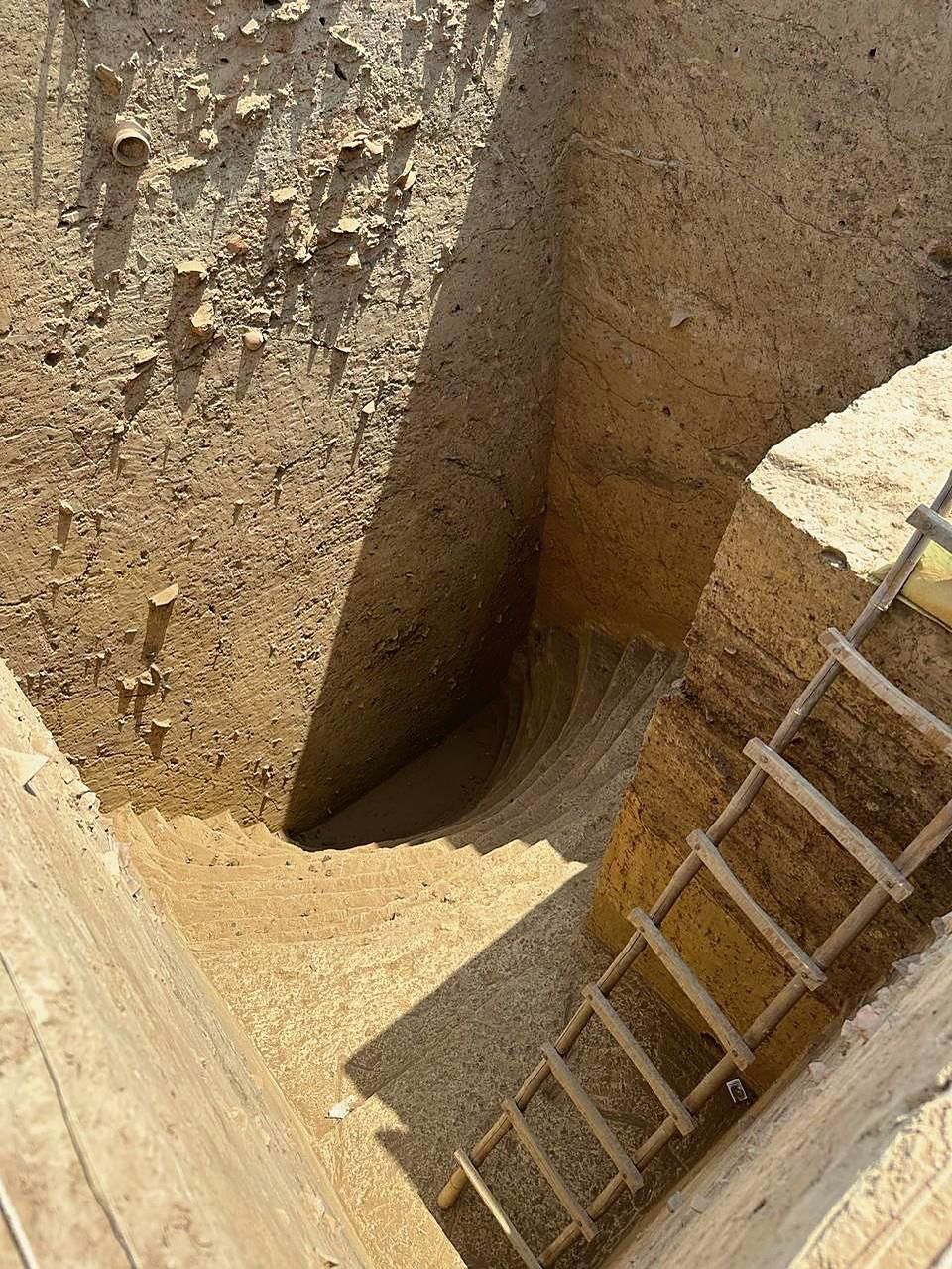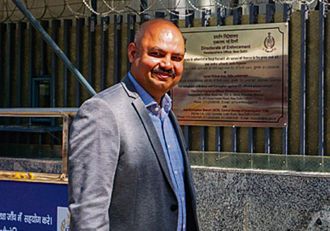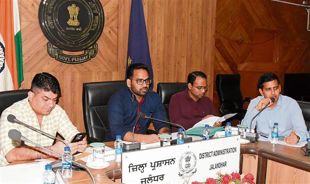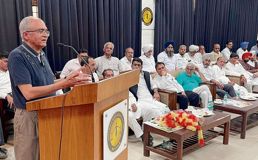
A fire pit that was found during excavation at Kunal, where evidence of animal sacrifice has also been discovered. Tribune photo
Anil Kakkar
Sirsa, March 31
The ancient site of Kunal in the Ratia tehsil of Fatehabad district stands as a silent witness to the rise and fall of civilisations spanning millennia. Known as one of the earliest pre-Harappan settlements, Kunal has long been revered for its historical significance.
The latest excavation that began at the site on December 4, 2023 and concluded today on March 31 has reignited interest in the settlement and the latest findings might reshape our understanding of India’s prehistoric past.
Led by a team of archaeologists, the recent excavation at Kunal has unearthed a treasure trove of artefacts and provides insights into the cultural evolution of ancient societies. Dr BR Mani, Dr Banani Bhattacharyya and their colleagues embarked on a journey to uncover the secrets buried beneath layers of time, breathing life into the vestiges of a bygone era.
Spanning an area of approximately 15 acres, the settlement boasts a rich tapestry of history, with over 4 m of habitation deposit and 7 m of workspace deposit, revealing the remnants of pre/early Harappan and mature Harappan phases.
Collaborating with the state Department of Archaeology, the Archaeological Society, New Delhi, and the National Museum, the team meticulously combed through the ancient ruins under scorching sun, driven by a fervent desire to unlock the mysteries of the past.
Dr Banani Bhattacharyya, the co-director of the state Department of Archaeology, emphasised the ground-breaking nature of their findings, stating the excavation had laid a significant contribution to early Harappan studies in the Indian subcontinent.
The team has uncovered indigenous cultural traits intertwined with influences from contemporary regional early Harappan cultures, offering a nuanced glimpse into the socio-cultural dynamics of ancient societies.
One of the most remarkable revelations of the excavation is the discovery of three successive occupational periods, each marking a distinct phase in the evolution of early settlements. From humble pit dwellings to the emergence of square and rectangular mud-brick houses, the structural evolution of Kunal reflects the gradual transition from primitive agrarian societies to more complex urban centres.
Central to the excavation is the unearthing of a community fire altar, a focal point of religious and social significance in ancient times. Alongside the evidence of animal sacrifice, these findings provide invaluable insights into the spiritual beliefs and rituals practiced by early inhabitants, shedding light on the intricate tapestry of their cultural landscape.
As excavations continue, Kunal continues to yield a wealth of artefacts that offer tantalising glimpses into the daily lives and customs of ancient peoples. From intricately crafted jewellery and ceramics to copper implements and bone tools, each discovery serves as a testament to the ingenuity and craftsmanship of our ancestors.
The radiocarbon dating of samples has provided concrete evidence of Kunal’s antiquity, with dates ranging back to the 6th-5th millennium BCE. These findings solidify Kunal’s place as a cornerstone in the study of India’s ancient past, reaffirming its status as a cradle of civilization in the subcontinent.
As the excavation unfolds, the story of Kunal continues to captivate the imagination of historians and archaeologists alike, offering a tantalising glimpse into the lives of ancient peoples and the rich tapestry of cultures that once thrived in the region.
Evidence of successive occupational periods
- One of the most remarkable revelations of the excavation is the discovery of three successive occupational periods, each marking a distinct phase in the evolution of early settlements
- From humble pit dwellings to the emergence of square and rectangular mud-brick houses, the structural evolution of Kunal reflects the gradual transition from primitive agrarian societies to more complex urban centres
Join Whatsapp Channel of The Tribune for latest updates.



























